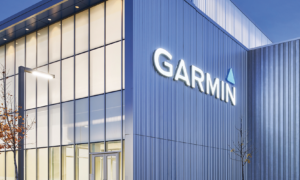
Autonomous vehicles are all the buzz in the automotive industry: the smart car that can navigate from point A to point B without human input; a steering wheel that lets human drivers check out for a while on their way to work. This commute time could suddenly be used for responding to emails, catnapping or reading while the car deals with the stress of rush-hour traffic and safely delivers its occupants to their destination.
Because the automotive industry is vastly larger than the marine industry, with the resources to boot, there is a natural migration of technology from automotive to marine. The marine industry has been successful at marinizing the work of hundreds of thousands of automotive engineers. The next questions are: Will we have autonomous boats soon? And do we even want them?
Before we can answer those questions, let’s examine what an autonomous boat is, beginning with the meaning of autonomous. When I first dug into this topic, I was surprised to learn that most of what is happening is Advanced Driver Assistance System, or ADAS. These vehicles are categorized by the level of automation they deliver. At the lower levels of this scale, the marine industry had basic driver-assistance systems long before automotive. Think autopilots. Early autopilots were not autonomous, but they were automated. What’s the difference? Automated systems follow a predefined program or routine. The autopilot is going to hold the initial course until the user changes it. The big difference with an advanced or autonomous system is that the system makes decisions without user input. In a highly simplistic way, these systems sense, “think” or make a decision and then act.
To accomplish this routine, ADAS systems draw from a wide array of inputs to help create a world map. These sensor inputs could be cameras, GPS, LIDAR, sonar, radar, AIS or any combination of those technologies. Additionally, ADAS systems may collect information from the boat: rudder position, engine gear-shift position, throttle position. Maps, nautical charts and satellite images may also be used.
All of this information combines to create a digital representation of the boat and its surrounding environment — in other words, a world map. ADAS then uses this world map in the “think” part of the process.
During the “think” phase, the system continually evaluates and updates this world map. But how does it distinguish the object off the starboard bow as a boat, a buoy or a seagull? If it is a boat, what direction is it going, and how fast? What kind of boat is it? Is collision imminent? Is action needed in accordance with the rules of the road?
The answers to those questions take us to the next set of buzzwords: artificial intelligence, machine learning and algorithms. The shorthand version for understanding these terms is that is the systems learn and store information, and undergo training on how to use it.
In our example, let’s assume the object off the starboard bow is a sailboat under sail. This boat will cross our route and is, in fact, a collision hazard. The ADAS searches a database of images and determines that the object is a sailboat — all while applying the vessel’s course, range and bearing from the radar, and evaluating the chart of areas of water with adequate depth. The ADAS decides that the best course of action is to alter course to starboard, to pass astern of the sailboat while maintaining an appropriate closest point of approach.
The final phase of the process, after “think,” is “act.” The ADAS technology needs to turn the boat to starboard. With the increasing prevalence of steering, shift and throttle controls, the ADAS interface with the vessel’s mechanical systems has also simplified. Additionally, utilizing the native command-and-control systems reduces complexity and lowers the chances of output failure — assuming the native control system complies with American Boat & Yacht Council Standard P-28, Electric/Electronic Control Systems for Propulsion and Steering.
The end result of our theoretical ADAS example? The boat avoids a collision and safely returns to its intended route, all without additional human input.
This example of an ADAS operating a boat while underway is highly simplified, and it raises many questions. How do we address ADAS systems that have command and control of the boat? What safeguards are needed? Does the system fail in a safe way? What is necessary from an ABYC standards perspective? Is the technology stable and evolved enough to write a standard about it?
And these questions only scratch the surface. We did not even touch on ADAS intended for such close-quarters maneuvering as docking.
American Boat & Yacht Council standards currently address elements utilized in ADAS systems, such as dynamic positioning, and electronic shift and throttle. While this technology continues to evolve, the council is digging deeper into advanced driver assistance systems to help maintain boating safety. Stay tuned.
This article was originally published in the October 2023 issue.
Brian Goodwin is technical director for the American Boat & Yacht Council.











